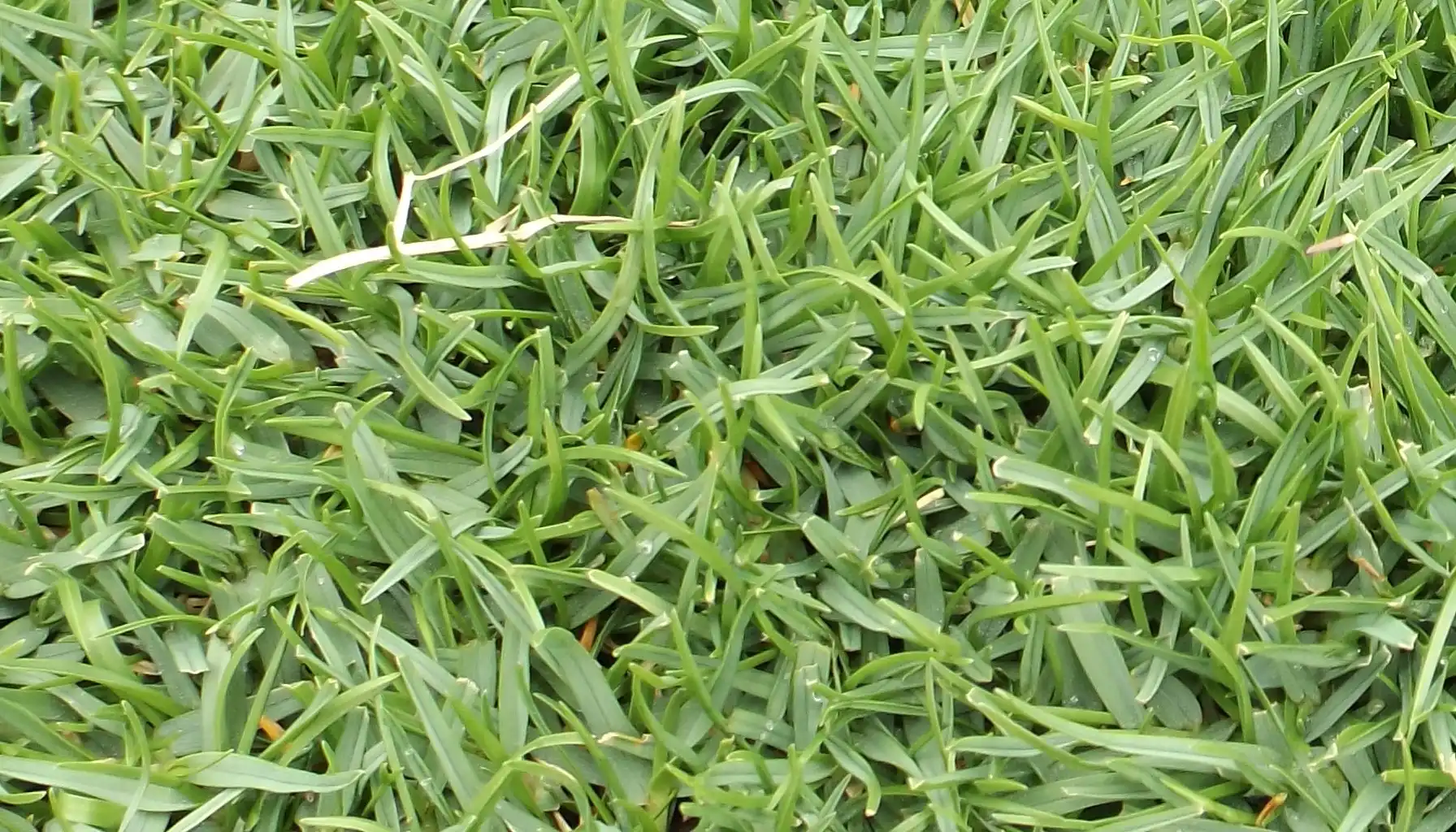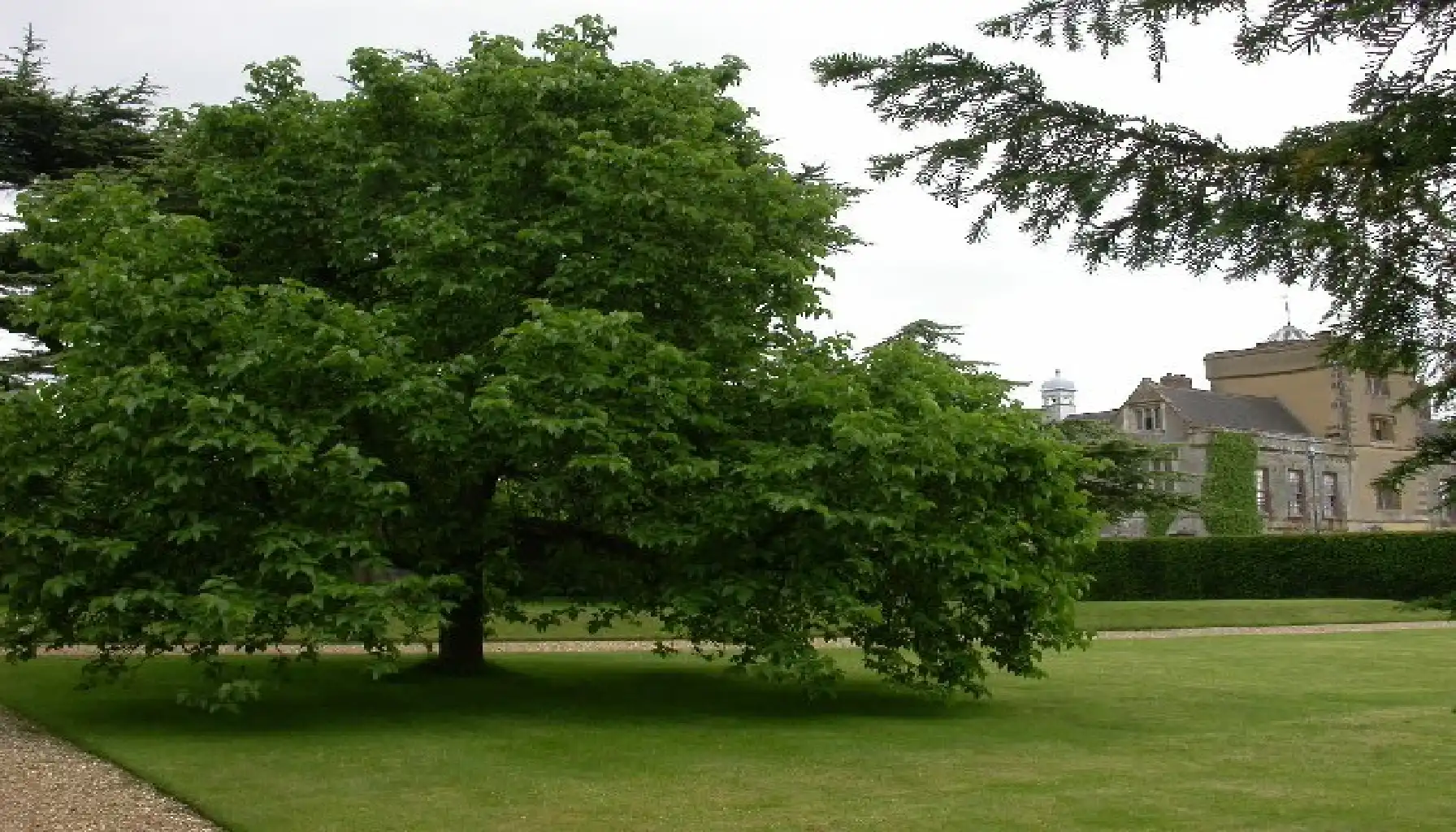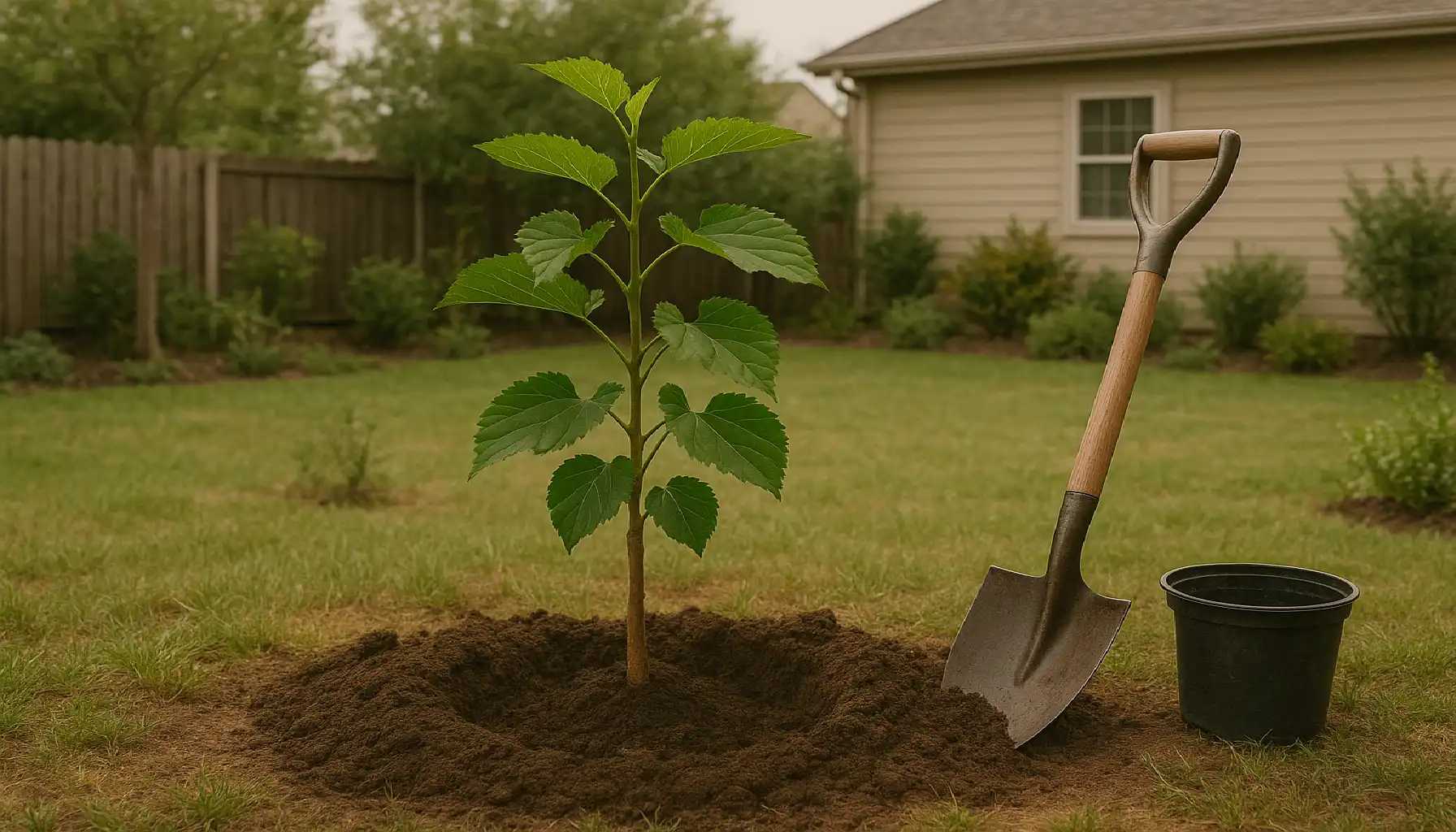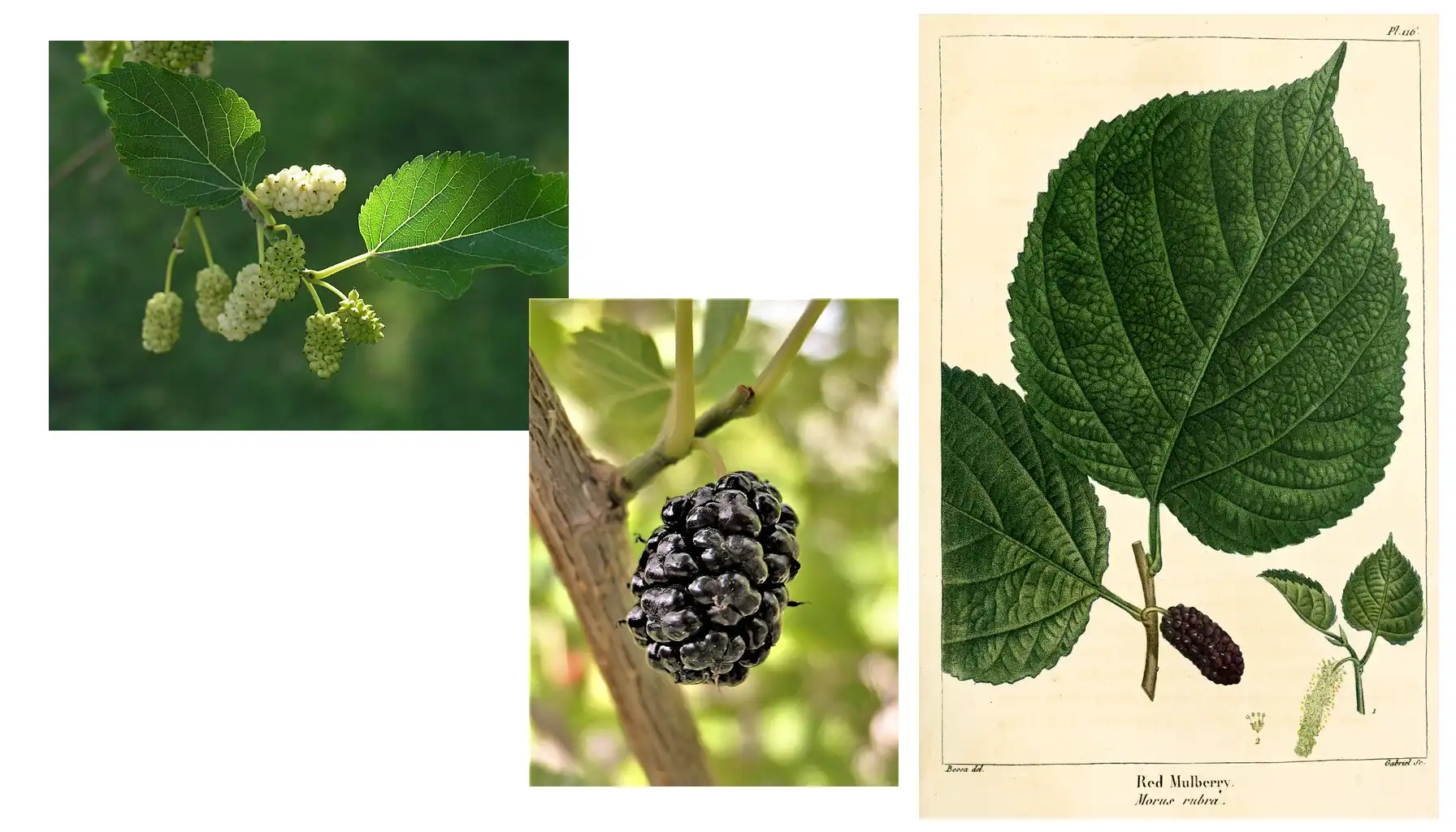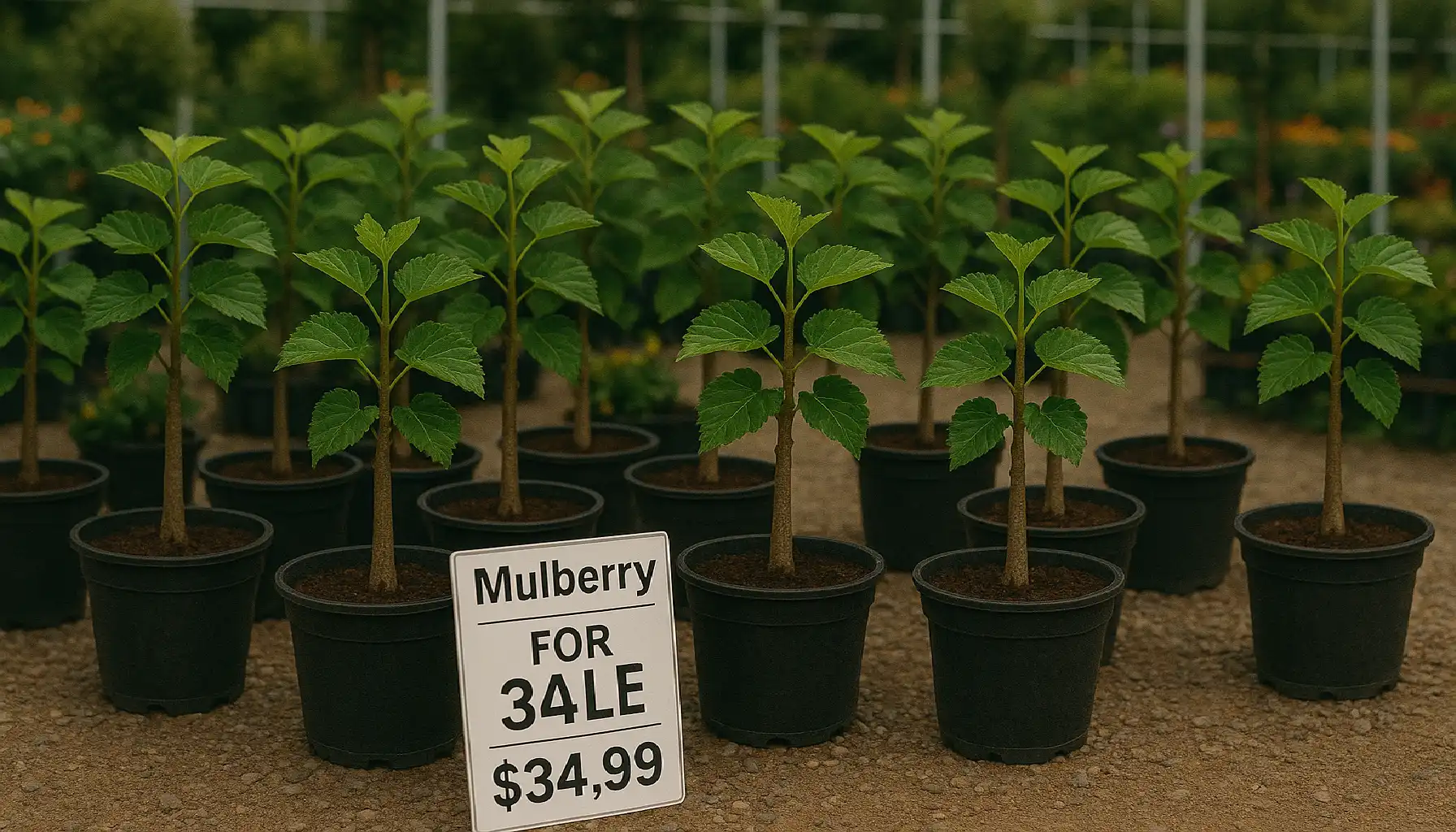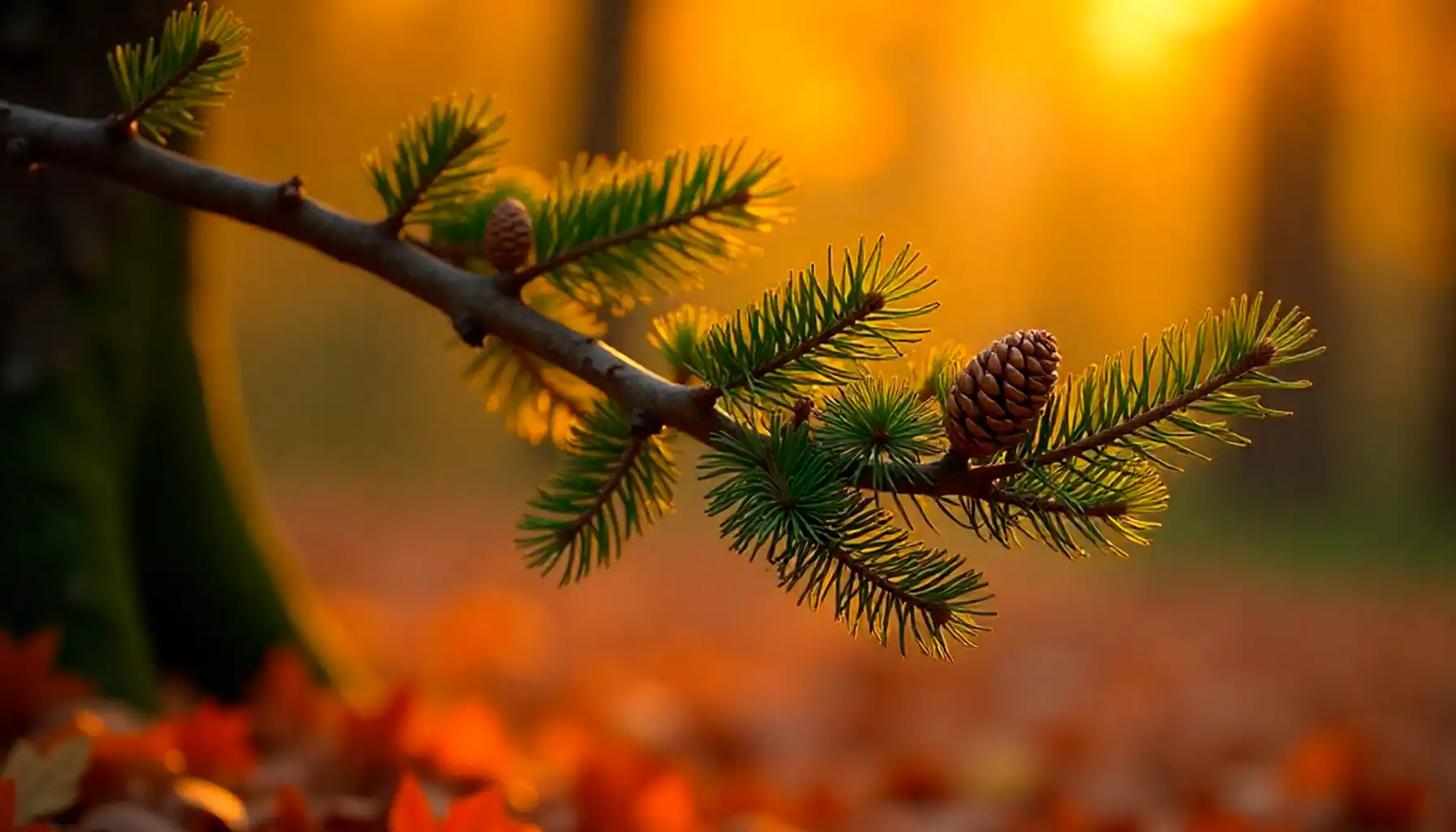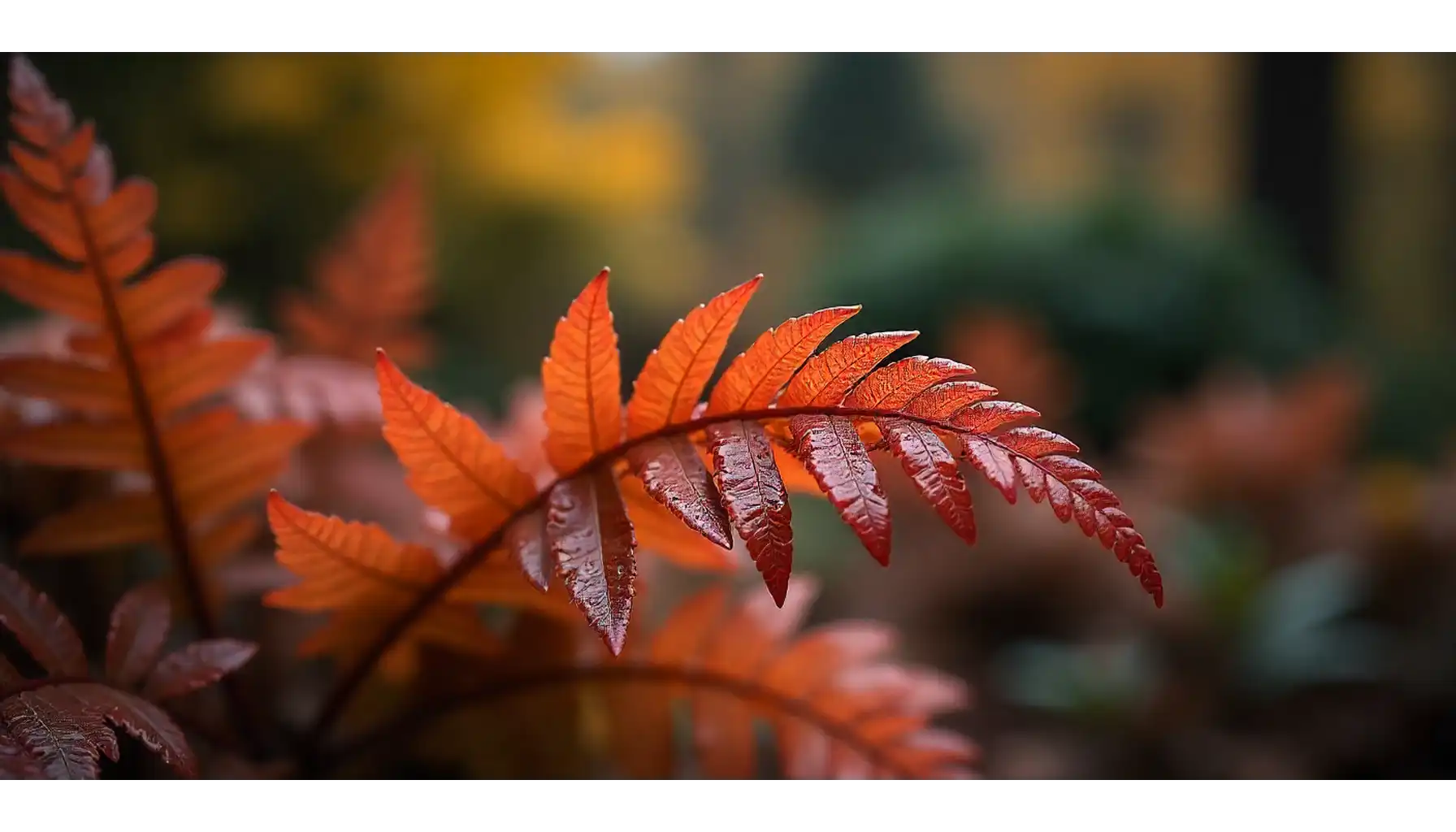How big do mulberry trees get? Mulberry trees offer both delicious fruit and welcoming shade in any garden. These hardy adapt to many climates and soil types. You can plant them in rows for a living fence or let them spread for a shady spot. Their fast growth and low maintenance make them a top choice for beginners and experts alike.
This guide covers every step of growing mulberries successfully. You will learn how to choose the right variety, prepare the soil, and plant your saplings. You will also find tips on watering, pruning, and harvesting to maximize your crop. For quick identification of pests or diseases, try a free plant identifier app.
Planting and Growing Mulberry Trees the Right Way
Start by learning how to plant mulberry trees correctly. Choose a sunny spot and dig a hole twice as wide as the root ball. Place the tree so the root flare sits just above ground level. Backfill with native soil and water deeply to settle the roots.
Know where do mulberry trees grow best before you dig. These trees thrive in USDA zones 5–9. They prefer well-drained loamy soil and full sun. Since where are mulberry trees native to influences their climate needs, pick varieties suited to your region’s winter lows and summer highs.
Focus on growing mulberry trees by encouraging strong root systems. Spread a layer of mulch around the base to retain moisture and regulate soil temperature. Young trees establish quickly—notice how fast do mulberry trees grow once roots take hold. You’ll see new shoots and leaves within weeks.
Maintain your sapling by watering weekly during the first year. Prune lightly to shape a strong scaffold and remove crossing branches. Check soil moisture and adjust irrigation in hot weather. Consistent care ensures a healthy start and long-term shade or fruit production.
Essential Tools for Planting:
Shovel: Use a sharp-edged shovel to dig wide, deep planting holes.
Mulch: Spread organic mulch to conserve water and suppress weeds.
Compost or aged manure: Mix into backfill to boost nutrient levels for root growth.
Tree stakes: Secure young trees upright in windy spots to support trunk development.
How to Care for Mulberry Trees Year-Round
Start with a consistent watering schedule and fresh mulch each season. Water young trees twice a week during dry spells and deep-soak mature trees every 10–14 days. Refresh mulch annually to retain moisture and suppress weeds. Avoid overwatering and don’t let mulch touch the trunk. Over-mulching and incorrect timing when pruning mulberry trees count among the most common care mistakes.
Feed your trees for the best fruit and health. Apply a balanced, slow-release formula in early spring. Choose the best fertilizer for mulberry trees that offers equal nitrogen, phosphorus, and potassium. Spread it evenly around the drip line and water in well. Pause feeding once berries form to prevent leafy growth at the expense of fruit.
Trim and protect your mulberry through each season to extend its lifespan. Head back long shoots in late winter before sap flow begins. Remove crossing or dead branches to improve air flow. With regular care, you’ll see how long mulberry trees live—often 30 – 50 years or more in good conditions. For step-by-step pruning and troubleshooting tips, check out our What’s Wrong with My Plant – Quick Diagnosis & Ways Out guide.
Season | Key Care Tasks | Details |
Spring | Fertilize, prune lightly, mulch, pest check | Apply balanced fertilizer (e.g., 10-10-10); prune for shape; add 2" mulch; scout for aphids |
Summer | Monitor pests, water deeply | Water 1–1.5" weekly; inspect for spider mites and caterpillars; spray neem oil if needed |
Fall | Mulch refresh, prune for structure | Replenish mulch layer; thin crowded limbs; remove deadwood |
Winter | Protect roots, minimal pruning | Do not prune during dormancy; wrap trunk in cold climates; clear snow from lower branches |
Identifying and Choosing the Right Type of Mulberry Tree
Gardeners often explore different types of mulberry trees to match their space and goals. Some varieties bear fruit, while others serve mainly as shade or ornamental screens. Learning identification types of mulberry trees helps you pick the best fit for your yard. You can tell them apart by leaf shape, berry color, and growth habit.
If you want abundant harvests, consider white mulberry trees. They produce sweet, pale berries that birds and people enjoy. These trees grow fast and tolerate a wide range of soils. Their leaves also feed silkworms in traditional cultivation.
For smaller spaces or patio containers, look into dwarf mulberry trees for sale. The Dwarf Everbearing Mulberry stays under 8 feet tall. It still produces large, dark berries through summer and fall. You can easily prune it into shapes or grow it in a large pot.
If you want a tidy landscape without messy fruit, choose fruitless mulberry trees. These sterile cultivars create dense foliage and broad shade. They rarely drop berries, so you spend less time cleaning. They suit walkways, play areas, or street plantings.
Common Mulberry Tree Varieties:
White Mulberry (Morus alba): Fast grower with sweet, pale berries; hardy in many climates.
Red Mulberry (Morus rubra): Native to North America; produces dark red fruit favored by wildlife.
Black Mulberry (Morus nigra): Slow to start but yields large, rich-flavored berries.
When and How Mulberry Trees Bear Fruit
You may wonder when do mulberry trees fruit in your region. Most varieties start producing berries three to five years after planting, with ripening months typically running from late spring through early summer. Mulberry trees are self pollinating, so they set fruit without needing a second tree nearby. They follow a natural yield cycle of heavy crops one year and lighter harvests the next.
Understanding how long mulberry trees produce fruit helps you plan for the future. Mature trees can bear berries for decades, often up to 30 – 50 years with proper care. You can enhance fruiting by applying a balanced fertilizer in early spring, pruning to open the canopy, and ensuring consistent moisture during bloom and berry development—read 5 Money Tree Care Mistakes That Can Ruin Your Plant’s Life for detailed feeding tips.
Type | Fruiting Start | Fruit Duration |
White | 3–5 years | 4–6 weeks |
Red | 4–6 years | 6–8 weeks |
Dwarf | 1–2 years | Up to 6 months |
Where to Find Mulberry Trees for Sale Near You
Start your search by typing mulberry trees for sale near me into your browser. Local garden centers often stock young saplings in spring. Many independent nurseries also display mulberry trees near me on their websites for curbside pickup. Calling ahead helps you confirm availability and variety before you drive over.
If you have limited space, seek out dwarf mulberry trees for sale. These compact cultivars fit well on patios and small yards. They deliver full-sized fruit on a smaller frame and often ship easily in containers. Nurseries that specialize in fruit trees frequently list dwarf options in their online catalogs.
For classic fruiting varieties, look for white mulberry trees for sale at larger suppliers. Wholesale growers and mail-order businesses usually carry Morus alba year-round. When you ask where to buy mulberry trees, online retailers can ship hardy, bare-root specimens straight to your door. This approach gives you more variety than most local shops.
In warmer regions, mulberry trees in florida thrive with minimal fuss. Florida-based nurseries offer heat-tolerant strains and advice on local planting zones. Always check city or county rules on invasive species before planting. Local Extension Offices can guide you on permits and best practices for your area.
Top Online and Local Nurseries for Buying Mulberries:
FastGrowingTrees.com: Offers a wide selection of bare-root and container saplings with nationwide shipping.
Local Extension Offices: Provide region-specific advice and sometimes sell local cultivars directly in spring.
Amazon Garden Store: Stocks potted and bareroot mulberries from multiple vendors for quick delivery.
Florida-Specific Nurseries: Specialize in heat-tolerant and native varieties suited to Sunshine State gardens.
Legal and Invasive Concerns: Are Mulberries Allowed Everywhere?
Arizona bans many fruiting varieties due to their prolific seed spread and problematic cleanup. Gardeners often ask why are mulberry trees illegal in arizona when they find local ordinances. The sticky berries litter sidewalks and attract pests. The state health department also cites allergy issues from the heavy pollen load.
Homeowners worry are white mulberry trees invasive in landscapes and natural areas. These trees self-seed readily, crowding out native plants and altering habitats. Their rapid root growth can damage sidewalks and plumbing. Many regions list them as noxious invasives to protect local ecosystems.
Some cities and counties restrict planting to sterile cultivars or container-grown. Curious gardeners ask whether mulberry trees are illegal in other states when they see local bans. Restrictions aim to balance fruit production with public health and environmental safety. Always check your local code before ordering saplings—learn more about regional rules in Urban Gardening: Community and Events overview.
State | Legal Status |
Arizona | Banned (fruiting types) |
California | Restricted in some zones |
Florida | Allowed, but monitored |
How to Kill or Remove Mulberry Trees Safely
You can learn how to kill mulberry trees using both chemical and natural methods. Herbicides with glyphosate or triclopyr target the tree’s vascular system. For small saplings, manual removal by digging works well. These approaches answer what kills mulberry trees without risking nearby plants.
Timing matters when you decide to remove mature trees. Cut the trunk low and apply a herbicide paste to the fresh stump to prevent regrowth. If you prefer organic solutions, test whether will vinegar kill mulberry trees through repeated applications. You can also see if will salt kill mulberry trees by applying a salt-vinegar mix to the cambium layer. Always follow safety guidelines and wear protective gear.
Frequently Asked Questions
Can I remove a mulberry tree without using chemicals?
Yes. You can dig out young trees by uprooting the entire root ball. For larger trees, use the girdling technique to cut off nutrient flow.
How long does it take for a cut stump to die?
A treated stump usually dies within 2–3 weeks. Watch for new shoots and reapply removal methods if needed.
Will vinegar alone kill a mulberry tree?
Vinegar can weaken the tree but rarely kills it outright. Mixing vinegar with salt improves its effectiveness on the cambium layer.
Is it safe to use salt around other plants?
No. Salt can leach into surrounding soil and harm nearby vegetation. Apply it carefully and avoid runoff.
When should I call a professional arborist?
Hire a pro for large trees or tricky locations near structures. Professionals ensure safe removal and proper herbicide application.
Can mulberry roots regrow after stump removal?
Yes, roots can send up new suckers if you don’t treat the stump. Apply a herbicide paste or use natural killers immediately after cutting.
What do I do with the wood and roots after removal?
You can chip or burn small branches where local regulations allow. Compost roots only if they show no signs of disease to prevent spread.
Keep Your Garden Healthy with AI Plant Finder
Removing unwanted mulberry trees frees space for new plantings and prevents invasive spread. You can follow safe methods and check regrowth spots regularly. To protect your remaining landscape, use AI Plant Finder to monitor trees and shrubs for pests or disease. Simply snap leaf photos and get instant diagnoses with treatment tips. This tool helps you maintain a vibrant, healthy garden all year long.
AI Plant Finder Related Posts:
